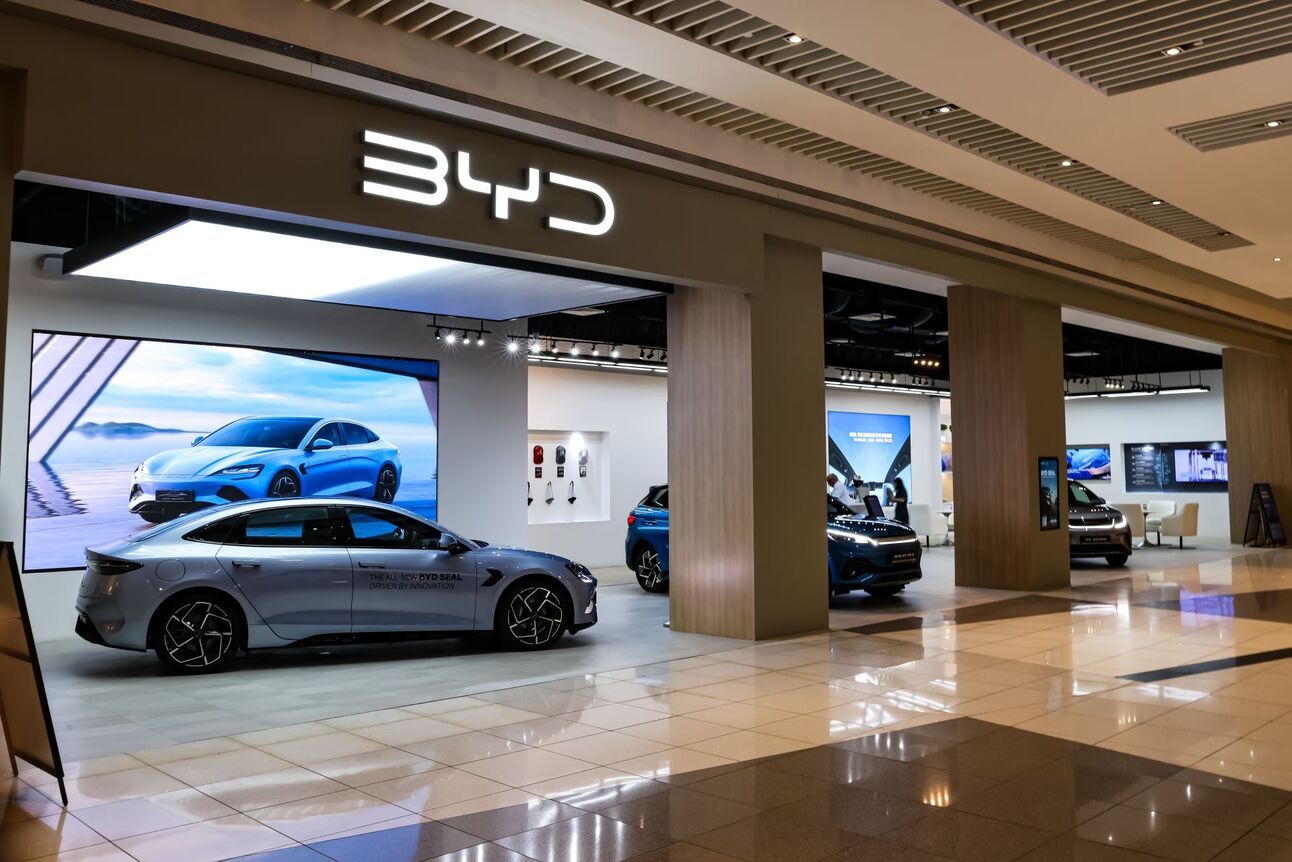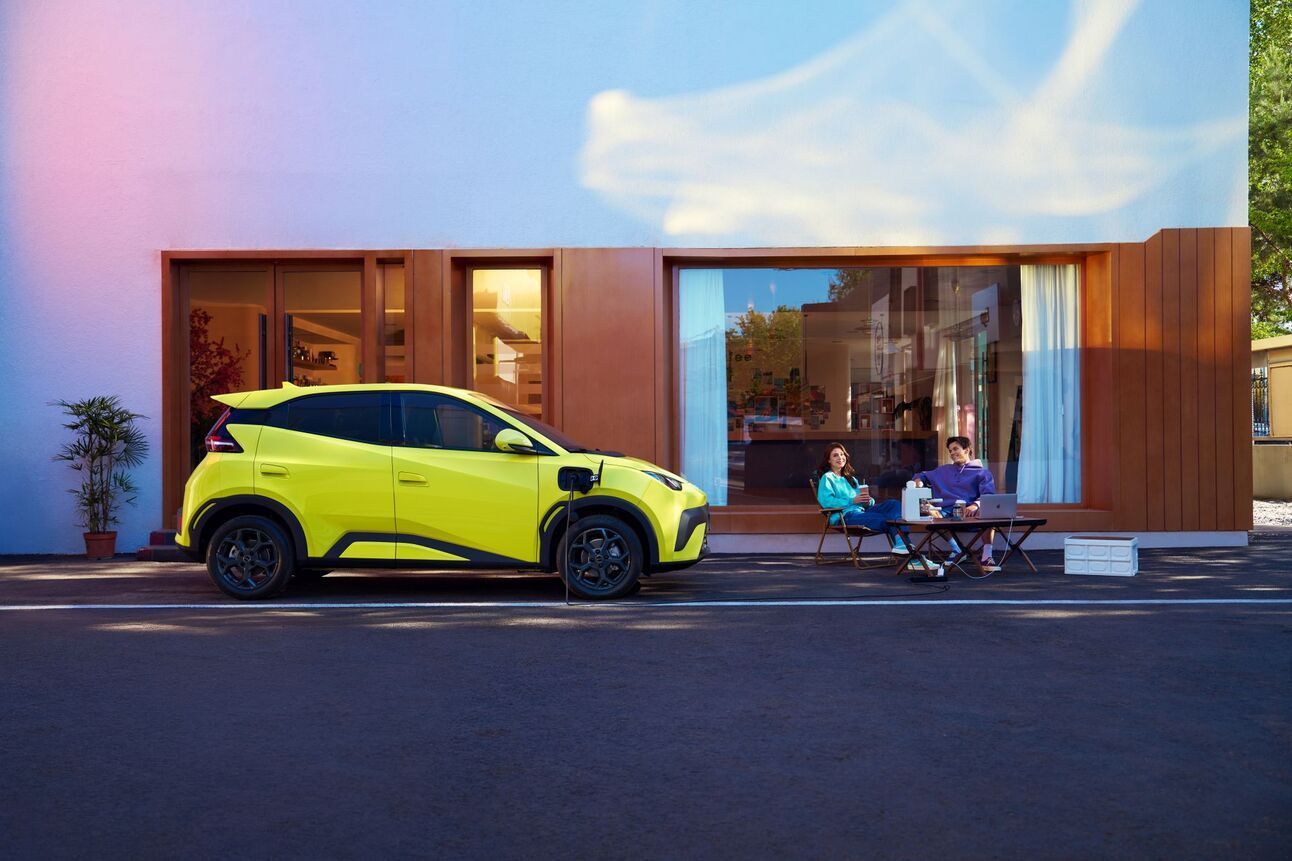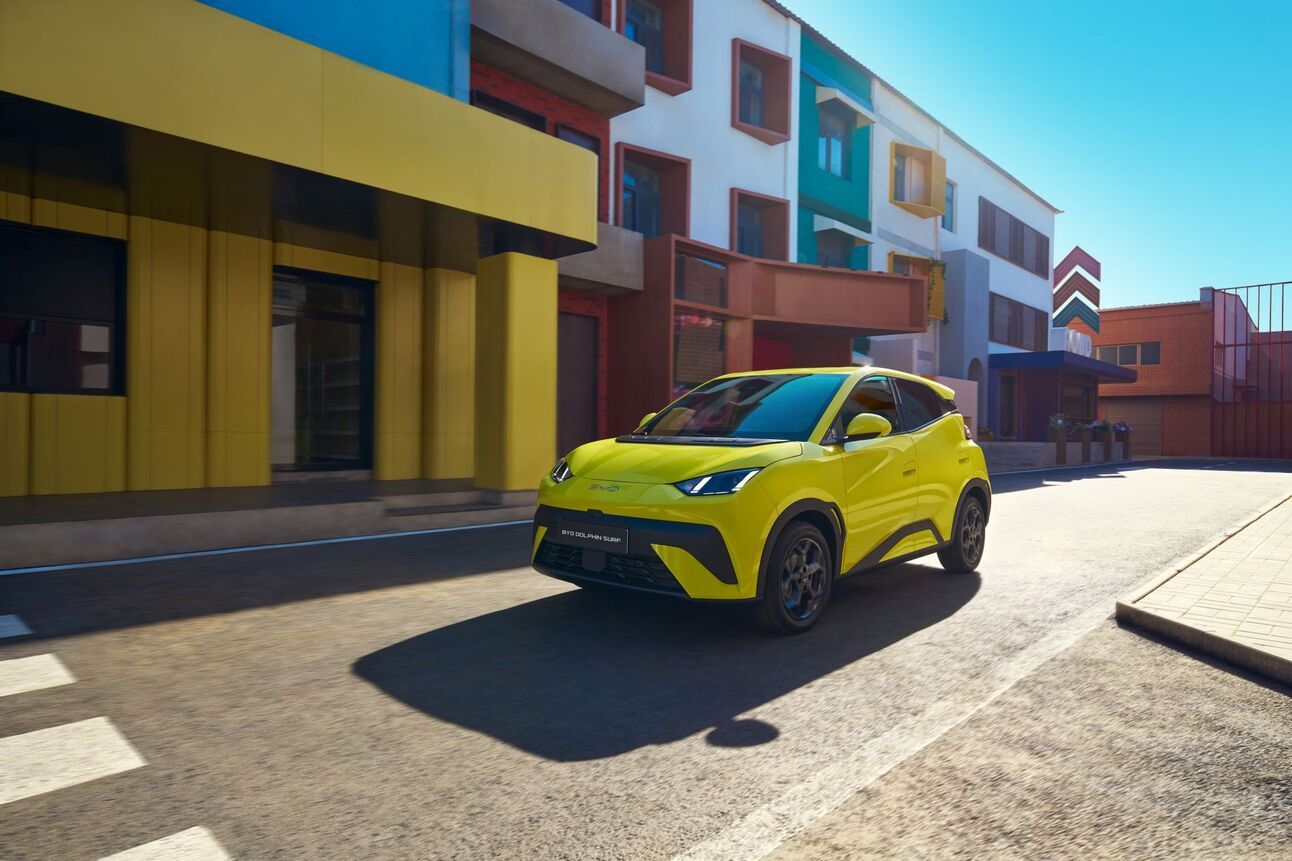
Copyright: Dr David Sing / Shutterstock
Same road, different rules. While Chinese carmakers continue to push into Europe with speed, scale, and showmanship, success across borders is proving far more complex.
In this week’s edition, we explore the cultural contrasts between China and Europe that go far beyond product specs – from showroom theatrics and karaoke features to sober German engineering and cautious consumers. A conversation with Robert Gold of Choice AG highlights just how different the rules of engagement can be.
Meanwhile, BYD makes a bold move with its Dolphin Surf, undercutting rivals on price and packing in features where others pull back. But as recent examples from Leapmotor, Nio, and even Tesla show: a strong product alone doesn’t guarantee traction.
The message? Cracking Europe isn’t about shouting louder – it’s about listening better.
Let’s dig in.
Sebastian
Table of Contents
Between Two Worlds: How China and Europe View Cars – and Customers

Copyright: Robert Way / Shutterstock
When I recently sat down with Robert Gold, Head of Procurement & Remarketing at Choice AG, it quickly became clear how much his recent trip to China had shaped his perspective on the automotive landscape. As part of a BYD-hosted delegation, Robert visited the Shenzhen area – often called the “Silicon Valley of China” – and attended Auto Shanghai. What he experienced there stood in stark contrast to what we’re used to from European shows like the IAA.
His summary? “It was loud, colorful, gamified – at one presentation, we literally had no idea what was happening. It was a collaboration with a gaming brand, there was music, dance, even a hybrid ape-human character on stage.” That kind of theatrical approach reflects a broader truth: Chinese OEMs rely heavily on emotion, experience, and digital integration. Karaoke systems, LED shows, playful software features – these are not gimmicks in China, they’re part of the brand DNA.
From my own visits to China, I can only confirm that. Even showroom experiences are often designed to surprise, entertain, and connect on an emotional level. By comparison, German brands still communicate through engineering, minimalism, and technical excellence. That resonates with a certain kind of European customer – but does it still work in Shanghai or Shenzhen?
Robert shared another important observation: While the interest in German cars in China remains surprisingly high, the brands themselves often seem unsure how to position. “It feels like a stuck-in-the-middle strategy,” he noted.
And I agree. Most OEMs talk about ‘building in China for China,’ but when you look closely, they’re rarely following through – whether for lack of speed, flexibility, or because the cultural leap just feels too big.
The challenge goes both ways. Chinese automakers are now entering Europe with bold pricing and feature-rich cars – like BYD’s new Dolphin Surf. But here, they face a more restrained, skeptical audience. High emotional appeal alone won't secure success. As Robert put it: “Just as the German car doesn’t automatically work in China, the Chinese car won’t automatically work in Europe. Each market has its own logic.”
We also discussed what this means for the future: European brands will need to decide whether to adapt – and if so, how far they’re willing to go without losing their identity. And Chinese OEMs will need to localize, not just translate. The success of both depends not on being louder or faster, but on being smarter about what really matters to customers – on either side of the world.
BYD Targets a Segment Others Leave Behind

Copyright: BYD
Following our recent analysis of how Chinese OEMs contrast with European brands in market approach, product design, and emotional appeal, BYD’s latest move in Germany offers a textbook example of how that difference plays out in practice.
With the new Dolphin Surf, BYD brings a compact EV to European roads that not only undercuts most of its rivals on price, but also comes well-equipped across all trim levels. It’s a car tailored to European expectations – but without losing the boldness and efficiency typical of Chinese brands.
For a limited time, the entry-level Active version of the Dolphin Surf is available at just €19,990, down from the regular price of €22,990. That makes it one of the most affordable new EVs in Germany today. With a 30 kWh battery offering 220 km of range, it covers typical daily needs and includes features often missing in this price class – from touchscreen infotainment with voice control to wireless smartphone connectivity and key driver assistance systems.
The Boost version steps things up with a 43.2 kWh battery, extending WLTP range to 322 km, or even up to 507 km in urban conditions, according to BYD. Charging is fast too: the battery supports 85 kW DC (65 kW in the Active), and a charge from 30 to 80 percent takes just 22 minutes. The 65 kW motor (175 Nm torque) remains the same, offering brisk city performance.
For those seeking more punch, the Comfort trim delivers 115 kW, 0–100 km/h in 9.1 seconds, and a top speed of 150 km/h. The tradeoff: slightly lower WLTP range at 310 km. But the Comfort’s additions – including a surround-view camera, heated and power-adjustable front seats, wireless charging, and upgraded interior – help justify its €26,990 price point.
Inside, the Dolphin Surf is designed for four passengers, with a surprisingly spacious feel thanks to the e-Platform 3.0, which enables compact exterior dimensions (and a 308–1037 L luggage capacity) without sacrificing interior space. A rotating 10.1-inch touchscreen, Hi BYD voice control, and NFC smartphone/smartwatch access bring modern functionality into the budget EV space.
Safety is no afterthought. Standard features include lane-keeping assistance, emergency braking, traffic sign recognition, speed limit alerts, and tire pressure monitoring. All versions support Vehicle-to-Load (V2L), allowing external devices to draw up to 3.3 kW – ideal for laptops or even e-bikes.
Trim levels also allow for individual style: exterior options include black, white, blue, or green, while interior materials – vegan leather – come in grey or black.
With its Dolphin Surf, BYD isn’t just selling an EV – it’s making a statement. While many European OEMs scale back their small car offerings, BYD is going in precisely the opposite direction: targeting the segment with a competitive price, useful range, quick charging, and surprising quality.
As we discussed in the previous article, succeeding in Europe requires understanding the market rather than mimicking it. BYD seems to be doing just that – by offering a car for Europe, built with the speed, scale, and confidence that define the Chinese EV industry.
Reality Check: Not All That Glitters Is Dolphin Surf

Copyright: BYD
Before we get too swept up in the buzz surrounding BYD’s Dolphin Surf, it’s worth pausing for a sober look at recent Chinese EV market performances in Europe – and remembering that a flashy launch doesn’t guarantee long-term traction.
Automotive analyst Matthias Schmidt offers a critical perspective: “Before the world's press get too drunk on the fumes coming out of BYD's interiors and wild hysteria surrounding the debut of the not-quite reasonably priced Dolphin Surf…” – a sharp reminder that expectations should be tempered with data.
He points to the case of the Leapmotor T03, a similarly positioned low-cost Chinese BEV that’s been available in France for two years. Despite its price advantage, fewer than 1,500 units were delivered over that period – even after Stellantis took over distribution. Not exactly a runaway success.
Schmidt also draws a parallel to NIO’s European debut in 2021, which launched with dramatic flair and high hopes. Almost three years later, reality bites: the number of NIO vehicles on German roads actually declined from 1,746 in 2023 to 1,724 in 2024. More cars are being deregistered than added.
Even Tesla, once the benchmark for electric momentum, has seen six consecutive quarters of year-on-year declines in new registrations across Western Europe.
The takeaway? The European EV market is far from a guaranteed growth engine – even for well-established or well-funded brands.
So, what does this mean for BYD and its new Dolphin Surf? The product may be right – compact, attractively priced, with enough tech and range to appeal. But product alone isn’t enough. It’s about trust, servicing networks, brand image, and patience. European buyers don’t follow launch shows – they follow value, infrastructure, and reputation.
As Schmidt dryly puts it: “Don’t count your bright yellow chickens before they hatch.” The Dolphin Surf may indeed find its niche, but the road to volume success in Europe is paved with more than ambition and aggressive pricing.
Time, not TikTok buzz, will be the real judge.
Thanks for reading and being part of this journey. If the content resonated with you, I’d be genuinely grateful if you passed it along to colleagues, friends, or anyone who shares an interest in the future of mobility.

Sebastian, Founder of China EV Pulse

